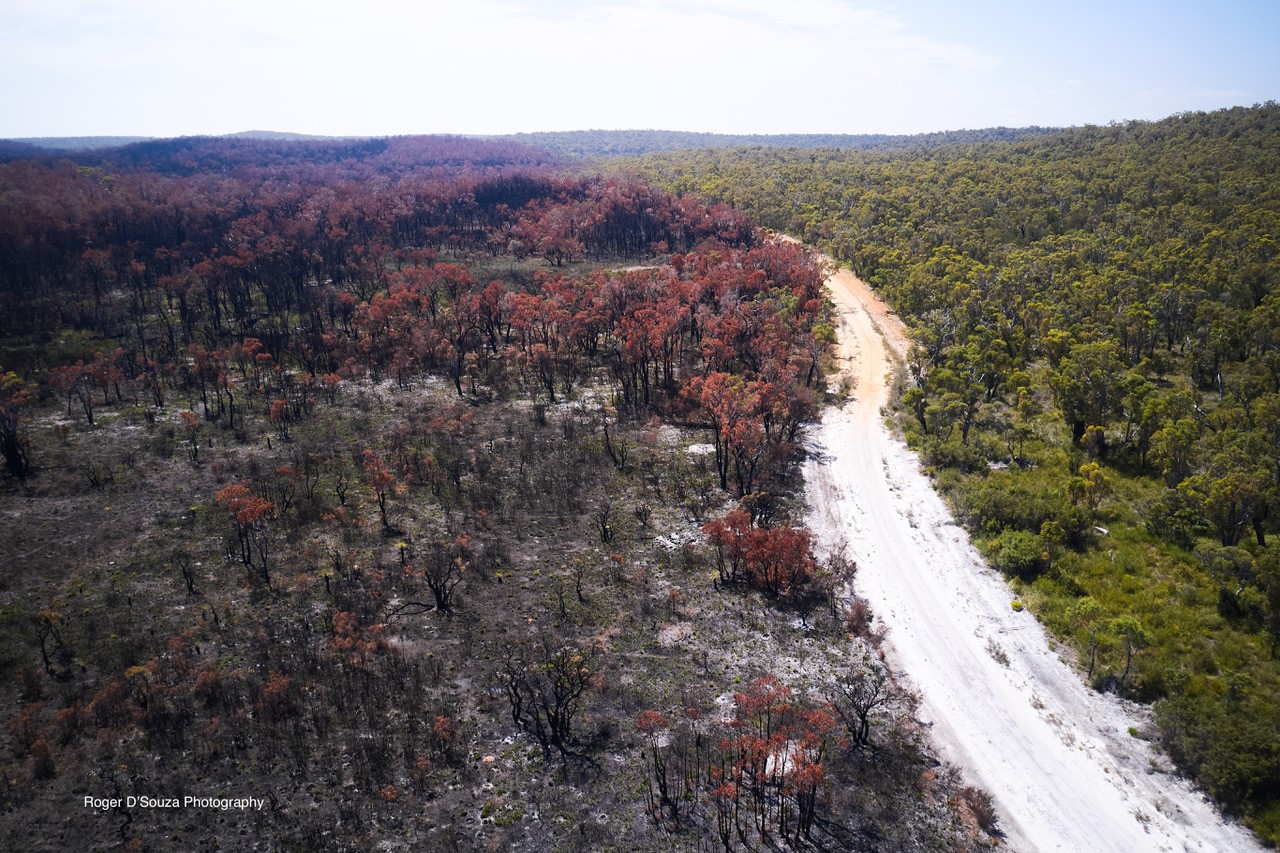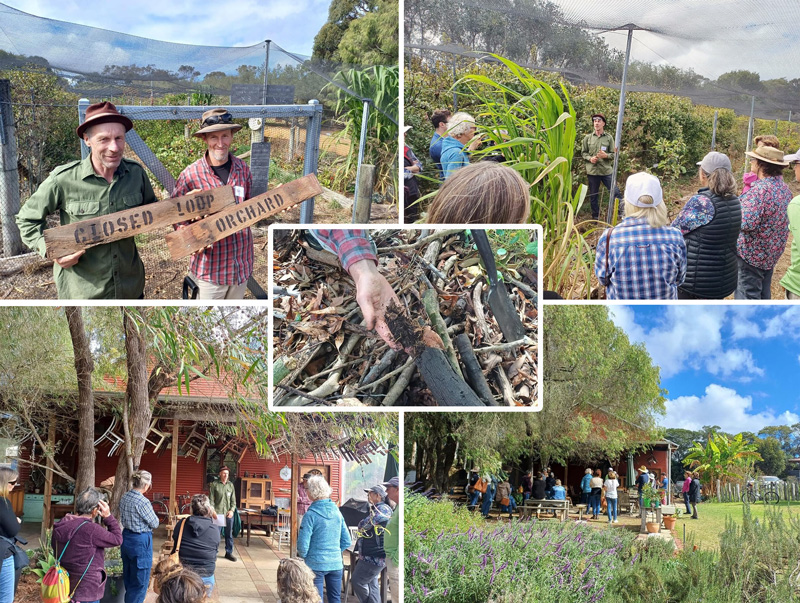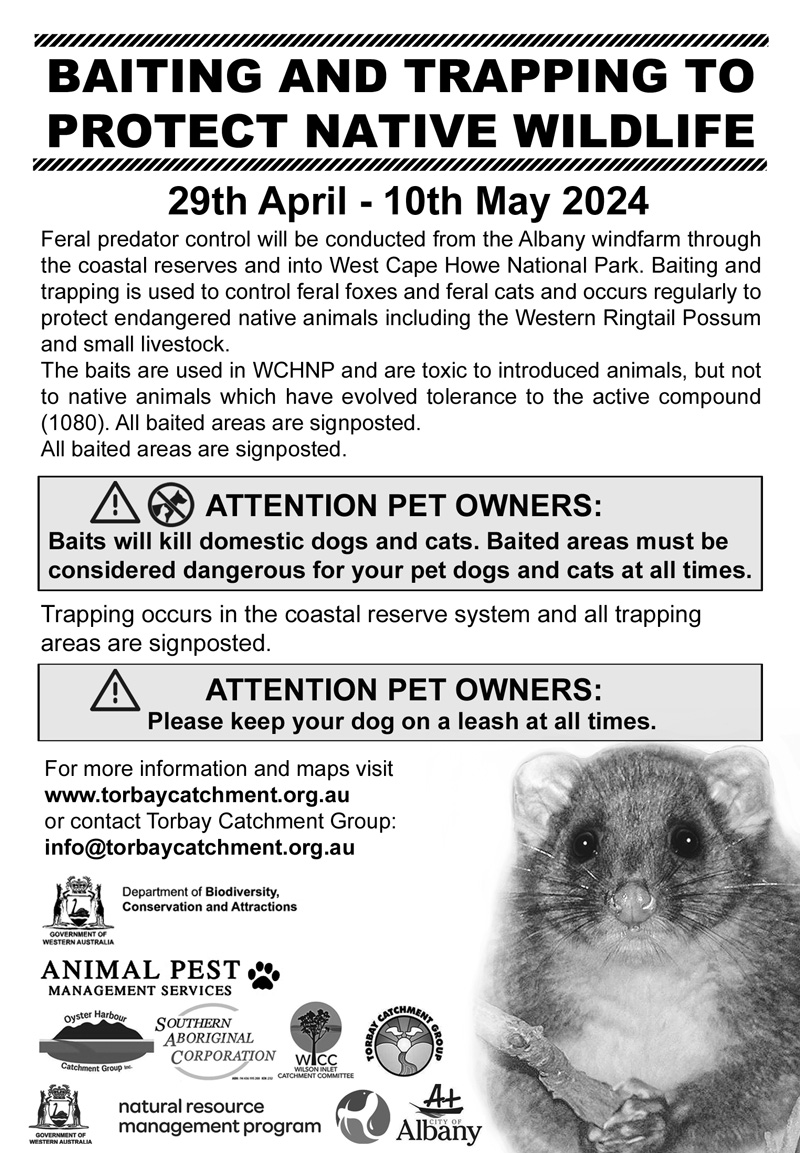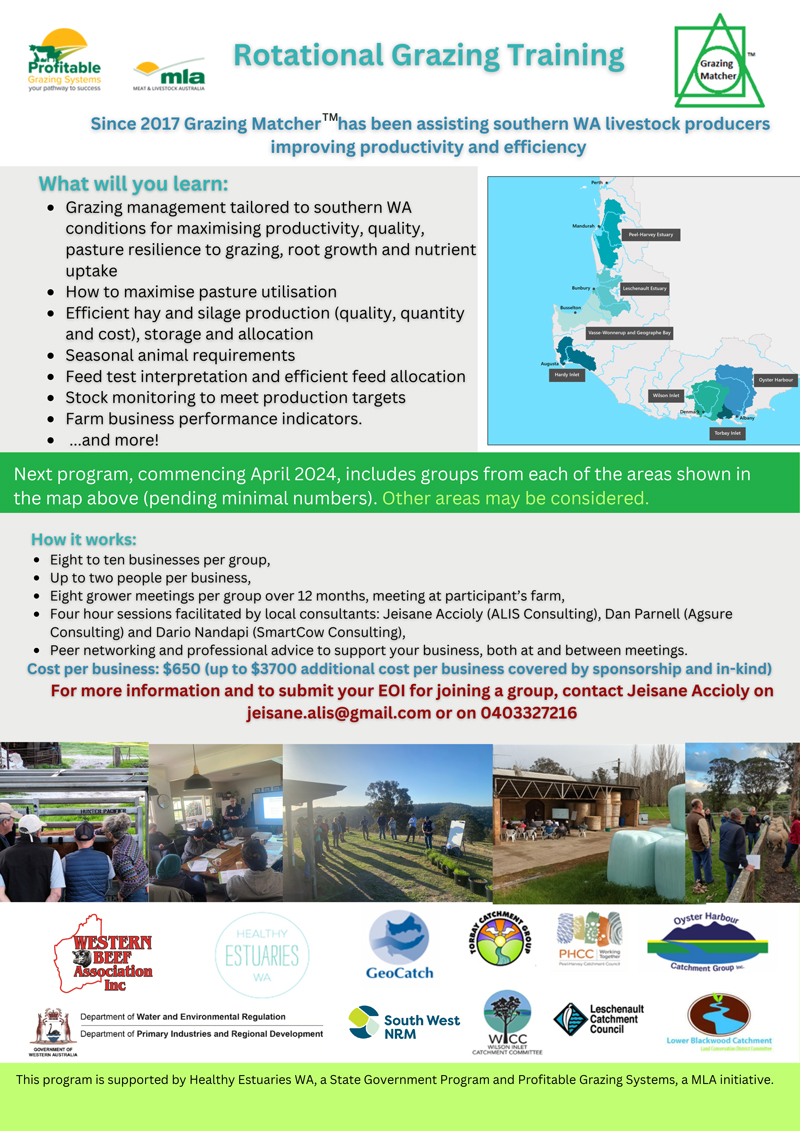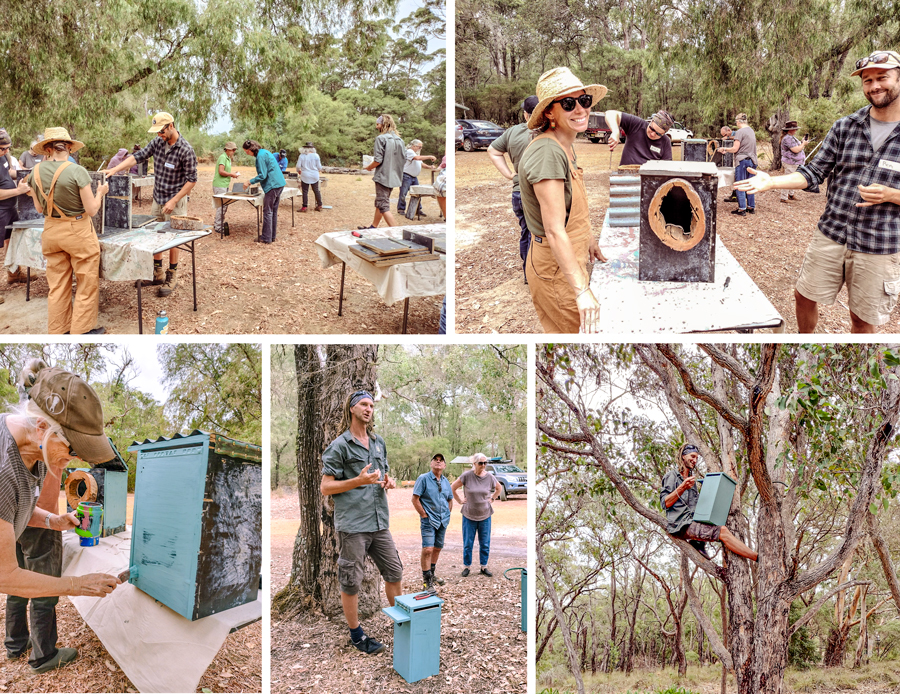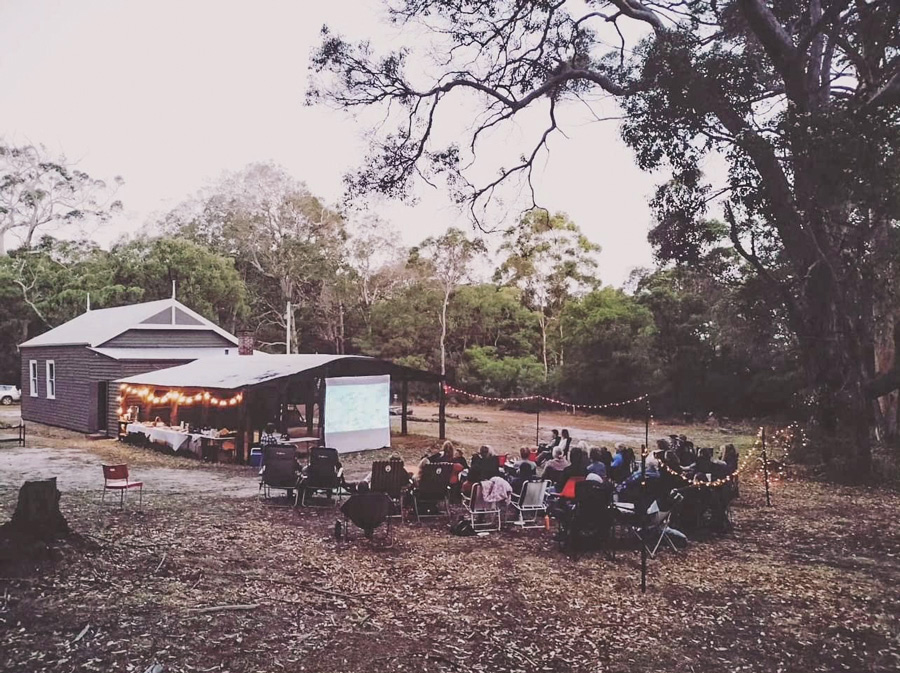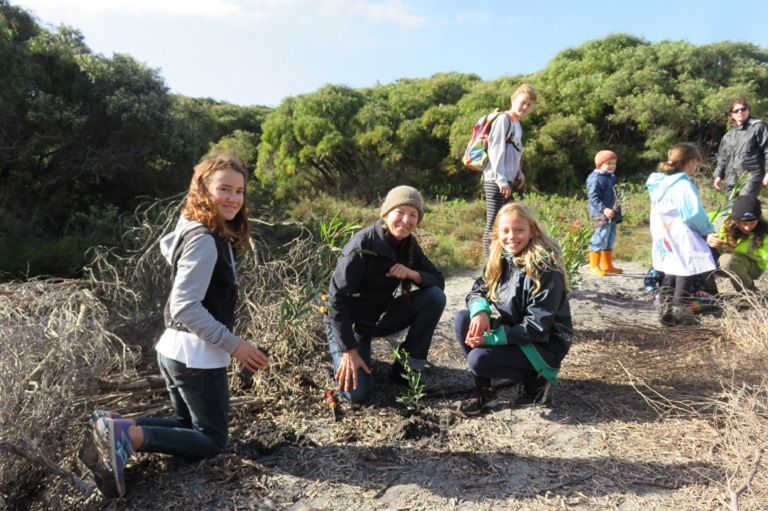
Last Friday, 28th July, TCG had the opportunity to team up with Woodbury Boston School to undertake a planting day. We were lucky enough that it just happened to coincided with the National School Tree Day.
It was a real team effort with around 60 students, staff and helpers from Woodbury Boston providing the manpower, City of Albany staff bringing brushing to the site, local seed collector Keith Smith (Formosa Flora) supplying seed, seedlings and expertise, and two members of South Coast NRM’s Coastal Team (Liz Tanner and Rosie Smith) providing much needed support and help. It was a fantastic group of like minded people to work with!
The area where we were working, is a City of Albany coastal reserve, located between Cosy Corner East campground and Perkins Beach. This little strip of land is less than 500m in length yet criss crossed with numerous tracks. The tracks are mostly unnecessary as there is beach access at both Cosy Corner East and Perkins Beach.
In late summer the City successfully closed some of the tracks to protect what remains of the coastal vegetation. The area is extremely important as it is part of what is known as the coastal macro-corridor. This allows for movement of animals through the landscape. The coastal reserve is very narrow at this point and with all the tracks, not much cover is left to allow animals to use the corridor.
The closed tracks were the areas that were planted.
We know the critically endangered Western Ringtail Possum uses this area. This is because in recent months TCG has been surveying for possums and this area has been surveyed. What the surveys indicate, is that the possums do not stay long in the degraded area where the tracks have now been closed. We assume this is because there is little cover and lots of tracks meaning they are vulnerable to predators. Given the lack of cover, it is likely that the possums have to leave the trees to cross tracks, leaving them vulnerable to feral foxes and cats.
We count ourselves as very lucky last Friday, with the weather being pretty kind. We managed to avoid most of the rain and plant all the closed tracks. Plantings were a mix of local provenance seed, and seedlings. The students spent time selecting sites, planting seedlings, raking the ground and sowing seed. Dieback management was high on the agenda with everyone being careful to wash shoes and tools to prevent dieback spread.
It is going to be great to revisit this site in the future and see how the recovery of the vegetation progresses.

